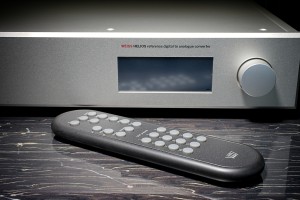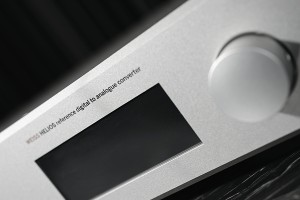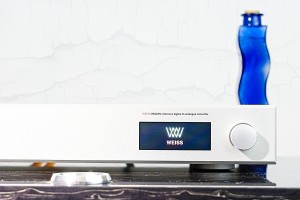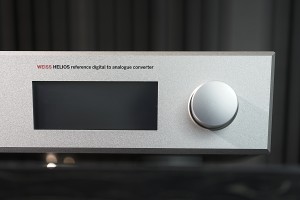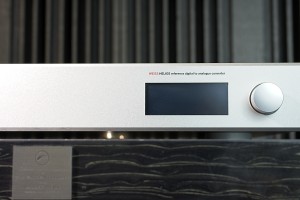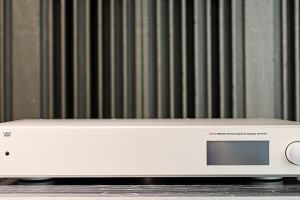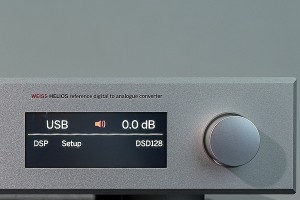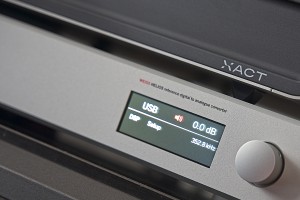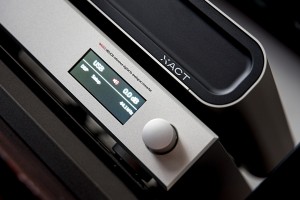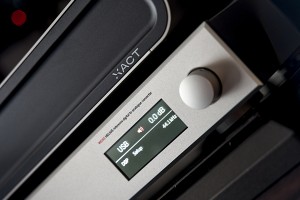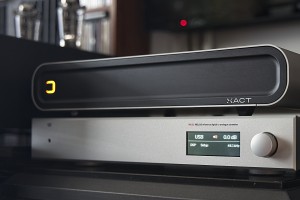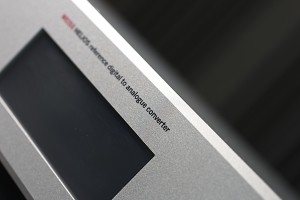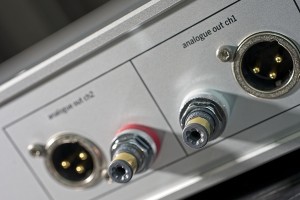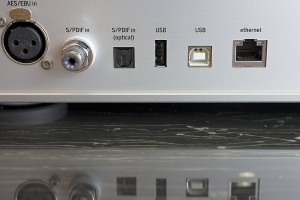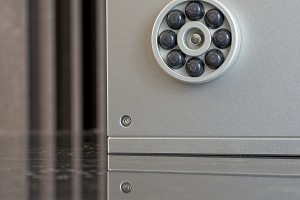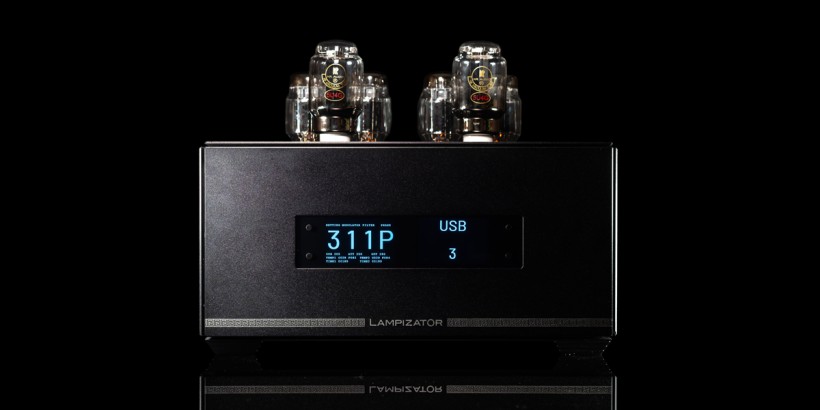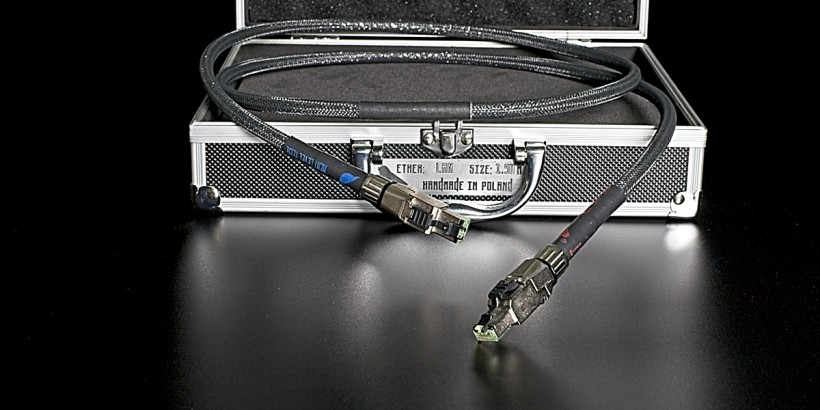A marriage of knowledge and experience from both, professional and home audio of the Weiss Engineering team led by Daniel Weiss bore a new child, a flagship reference D/A Converter, the mighty Weiss Helios.
Introduction
It’s been three and a half years since I reviewed the excellent DAC501 developed and manufactured by Weiss Engineering (you can find the review HERE). To be honest, I am not the biggest fan of audio components originating from the professional audio side of the glass, as its job is somewhat different from what I expect of a home audio product. Yet, the Swiss DAC managed to truly impress me. To this day it belongs among maybe ten best DACs that ever visited my listening room. The performance, or sound, was one thing that I, to my surprise, loved about it, the additional features, such as a simple, yet effective, room equalization it offered was another. As a whole it was a highly impressive, small-body device offering performance that could speak to a wide group of audiophiles and, I guess, professionals.
For those of you, who haven’t read the text or somehow haven’t come in contact with the Weiss brand (if you have, just skip ahead) so far let me offer some information about the brand and the man who created it, Mr. Daniel Weiss. The man in question right after graduating as an electronics engineer in 1979 joined the famous Studer Revox company. He worked there on analog anti-aliasing filters, test signal generators, sampling frequency converters, and digital audio processing for a two-channel DASH recorder. He left the company after five years and a year later, in 1985, he founded Weiss Engineering Ltd. Initially, the company focused its efforts on the development and production of professional digital audio equipment for mastering studios. The first product line was the modular 102 series system sold worldwide via the German company Harmonia Mundi Acustica. One of the largest setups of a 102 Series system was used at Sony Music in New York in the form of the IBIS digital mixing console. Sony used it to mix classical music recordings.
Later, in the early nineties, the Weiss Gambit Series was launched. It consisted of stand-alone units such as Equalizer, Dynamics Processor, De-Noiser/De-Clicker, A/D converter, D/A converter, Sampling Frequency Converter, etc. It allowed Weiss Engineering to be recognized as the leading company when it comes to signal processing for mastering hence many CDs released at the time were prepared using Weiss equipment. In 2000 company made a bold move entering the home audio market with a new product line. Ever since, Weiss Engineering Ltd. has been involved in both, professional and home audio markets benefiting from the knowledge and experience gained in one area to improve products for the other one and vice versa. What’s more, as only a few other companies that operate similarly have, Weiss has been successful among both, professional sound and mastering engineers and demanding audiophiles and music lovers. It is not an easy feat since audiophiles rarely recognize manufacturers of professional audio equipment as worth their attention. If you are interested in Weiss’s story you will find more information on their website as well as in my interview with Mr. Daniel Weiss (see HERE).
Design and features
Those of you who’ve read the DAC501 review may remember that it was the smallest of twin D/A Converters. The other, DAC502, featured a full-size chassis and there were a few minor feature differences, but these two were essentially the same converters. This time let’s start with the fact that the tested Weiss Helios belongs to the full-size category, at least in terms of width and depth, as with its rather small height it is a typical Weiss Engineering product. It uses a solid, robust chassis similar on the outside but somewhat different on the inside. It is a double chassis with a stainless-steel frame inside the thick aluminum paneled outer chassis. Its job is to protect the susceptible electronics inside from both, vibration and EM and RF Interference.
On the outside, judging by DAC502 photos, the only obvious difference between it and Helios is a headphone output or lack thereof in the latter. Sure, above a small, though informative, screen a hawk-eyed man will spot the model’s name, but the letters are small enough to miss them so the headphone output is what most people will notice. The thick, aluminum front panel features the aforementioned touch-screen and a small single push-knob that allows the user to turn the unit on and off, but also to operate volume control (if used) and the extensive menu. Let me add, that Helios is provided with a nice, metal remote control unit that not only allows one to operate the basic functions of the device but also selects several DSP presents saved under numerical buttons.
The rear panel holds a wide range of digital inputs including AES/EBU or S/PDIF via XLR socket, Optical Toslink, and SPDIF RCA. There is also a USB A port and RJ-45 that allows for UPnP/DLNA communication via Ethernet. Apart from digital inputs, there are two analog outputs, a balanced one (XLR) and an unbalanced one (RCA). Interestingly, each of the latter can be used as headphone output although it requires special headphone cable termination (or adapter) and selecting „headphone” (as opposed to „speaker” in the menu, with the latter being used when DAC is connected to inputs of preamplifier, integrated, or power amp) output setting that will adapt these outputs for headphone requirements. The set of the connectors is completed with a standard IEC power inlet. The device is available either in silver or black finish and it rests on four anti-vibration feet.
Based on what you’ve read so far, you’ve most likely already figured that Weiss Helios is a feature super-reach beast. It is not only a top-class D/A converter but also a preamplifier (due to adjustable outputs), headphone amplifier, and a streamer with a Roon Ready feature, and it is JPLAY certified. The Roon Ready function means that the device was certified by Roon and having a Roon server you can send signal (data to be exact) over your home network directly to Helios’ Ethernet port. JPLAY’s certification, on the other hand, means that the recently reviewed XACT S1 Digital Transport and Music Server (see the review HERE http://hifiknights.com/reviews/sources/xact-s1/) featuring JPLAY iOS app may be a perfect partner for Helios (in my opinion, based on using them both together, it is!). If you use JPLAY on any other server it will work seamlessly with Helios too.
Weiss Helios is still a sibling of the aforementioned DAC501 and DAC502, as they share the same digital audio platform, but the tested DAC sports a different D/A Converter chip and analog output section. This latest DAC by Weiss utilizes an eight-channel 32-bit ESS Sabre ES9038PRO D/A converter chip with four paralleled conversion channels per audio channel. It also benefits from an internal high-precision and low-jitter clock generator that provides an ultra-stable clocking for the D/A converter section. The new analog output section, on the other hand, features Weiss’ own OP2-BP discrete op-amps, four per channel. These are considered by many experts among the best money can buy today.
Weiss Helios does almost everything one expects of a modern DAC. It supports both PCM (up to 384 kHz) and DSD (64 and 128) formats. Still no MQA, but even Tidal seems to slowly be parting its way with it so it shouldn’t be a problem. Yet, if you need it and use Roon, the latter will decode (or unfold) the format for you. The preamplifier function, as well as the headphone amp, require a volume control. Importantly, one can operate it independently to drive an amplifier and headphones directly. For the latter, the -20 dB gain setting seems to work best, although it is adjustable too so you should try various settings to find the one that suits you best. The power supply section contains two mains toroidal transformers that provide power – one for digital, and one for analog section. Sensitive voltages have their regulators, separate for each channel. The user doesn’t have to worry about selecting the right mains voltage as the unit does it automatically checking the value on the inlet first, adjusting settings, and only then supplying power to the unit.
The built-in DSP or digital audio processing is based on the same algorithms Weiss uses in its professional audio products used for material mixing and mastering in studios. Since Helios can be operated interchangeably in speaker or headphone mode it allows users to store separate algorithm settings for both modes. In speaker mode, these algorithms include De-Essing, Room Equalizer, Multi-Band Parametric Equalizer, Constant Volume (aka Dynamic Adaption), Vinyl Emulation, Crosstalk Cancellation, and Loudness EQ. In headphone mode, these algorithms include De-Essing, Headphone Equalizer, Multi-Band Parametric Equalizer, Constant Volume (aka Dynamic Adaption), Vinyl Emulation, Crossfeed, and Loudness EQ. In the DAC501 review, I went deeper into what each of them does, so this time let me refer you to the other text instead of repeating the same information all over again.
For those who don’t have time to do that let me offer just a quick overview of each of these algorithms:
Room Equalizer – one that may be very useful unless you already have a professionally adapted room, is used to suppress room modes for a decent bass reproduction.
Creative Equalizer – if you like to try and „improve” the sound of less-than-perfect recordings this algorithm offers a tone control with low boost/cut, high boost/cut, and mid boost/cut.
De-Essing – the automatic removal of overly bright sibilances from human voices. The sibilance effect can be more or less pronounced depending on your speakers or room acoustics.
Constant Volume – adjusts the audio volume (loudness) to a constant value across all tracks played. Useful for “party mode” when the volume control should stay untouched.
Vinyl Emulation – get that special sonic character of a record player-based playback chain. We also employ an emulation of the DMM-CD procedure offered by the Stockfisch label.
Crosstalk Cancelling (XTC) – should be used for the playback of dummy head recordings (you may have some from David Chesky, for example) or live recordings via speakers for an incredible live sensation. With some clever signal processing of the speaker channels, it is possible to suppress the crosstalk, i.e. the audio going from the left speaker to the right ear and vice versa. If that works properly then the recording sounds as if one would be in the space where the recording has taken place. All the reverberation and 3D representation of the sound sources is there. (For speaker-based playback only.)
Loudness Control – a listening volume-dependent equalization of the audio.
The reason for developing the Sun God or Helios has been best explained on the manufacturer’s website so let me just quote it:
Weiss Engineering’s professional clients work in the world’s top-tier studios, fine-tuning the sound of the biggest artists on the planet. It is not an option for them to use anything but the best monitoring chains in existence. This is why they use Weiss Engineering’s professional DACs.
The HELIOS maintains that same quality level, with design and features that better suit the high-end hi-fi market. With the HELIOS, you are hearing what the professionals are hearing. (emphasize ed.)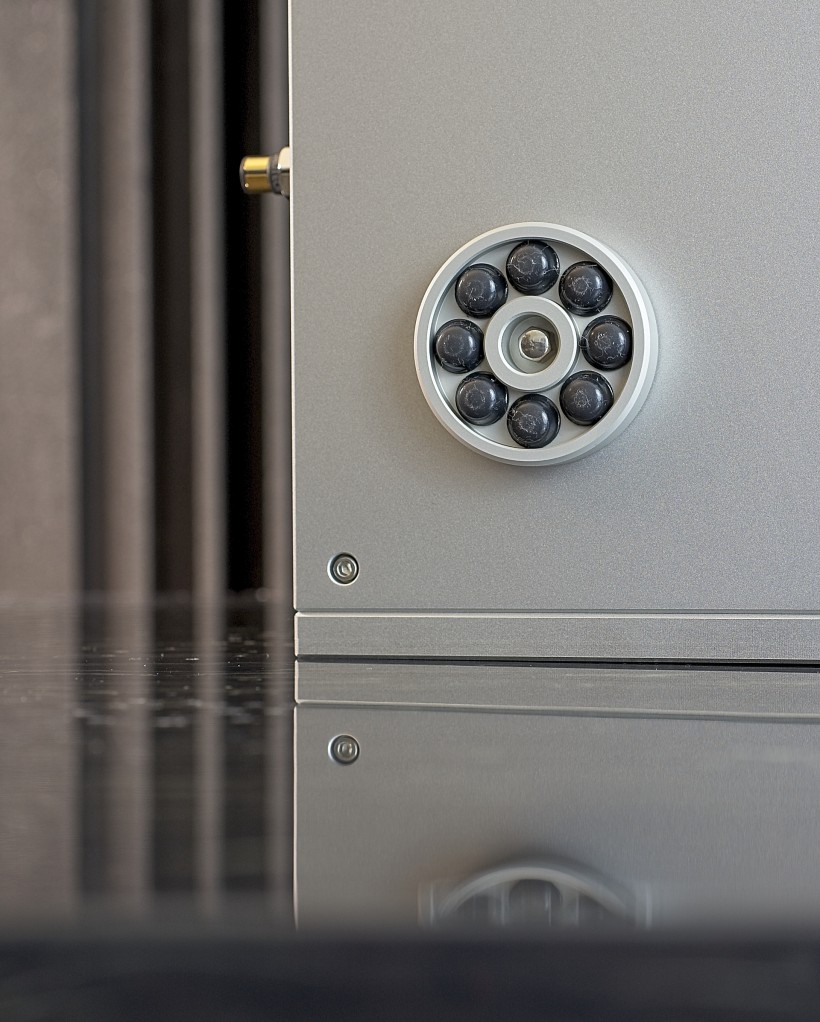
All that’s left for me to do, is to give Helios a try and write about it for you. Let’s get to it.
Sound
While I remain an analog, particularly vinyl, aficionado the times when I felt deeply relieved each time I could get back to my records (from any digital media/player) are gone. It took digital audio many years to achieve a satisfying level of performance but a while ago it finally did. That’s why I share my time equally, or to be perfectly honest, even with the scale tipping towards digital music (due to convenience – I am a lazy man), when assessing most audio components or even listening for pleasure. The past few months were particularly focused on music played from files. The first reason was an upgrade Łukasz Fikus and his team provided for my Pacific DAC. The new „2” specification (that I can’t recommend enough to all original Pacific users) elevated an already outstanding performance to an even higher level. And so I kept enjoying it and listening to numerous files in both PCM and DSD.
Then, I had a chance to spend several weeks with a set by Playback Design, namely their MPD-6 D/A Converter and MPD-X Digital Front End/Streamer. I am not sure yet, which review will you read first, Playback Design’s or this one, so I don’t want to spoil your chance to discover the results of my assessment, but let me just share that it turned out to be yet another exquisite representative of its species. And then came Weiss Helios and it kept me in a state of awe over the achievements of DAC manufacturers over the last few years. Yes, spoiler alert, Helios is a remarkable device! And I was sure of it already after the first few hours even without turning the Room Equalizer feature that I liked so much in DAC501, or any other one, for that matter.
As a source for Helios, I used my custom server featuring JCAT’s top Ethernet and USB XE cards. Later came XACT S1, another development by Marcin Ostapowicz of JCAT and JPLAY, or his complete hardware and software solution that can serve as both audio file server and transport (you can find the review HERE http://hifiknights.com/reviews/sources/xact-s1/). Before I finished this review, another product from Marcin came, namely JCAT’s USB XE card with Master OCXO Clock Upgrade (review pending) so I couldn’t help myself and had to use it for this test as well. One of the reasons is also the fact that Weiss DACs are JPLAY certified which means that the operation of JPLAY software was thoroughly tested by Weiss crew and they concluded it worked perfectly with their products. I also tried Weiss Helios with Lumin D3 as a file transport using the latter’s SPDIF output. It is a relatively reasonably priced device and its use meant limiting maximum PCM sampling frequencies, converting all DSD files to DSD 64, and using DoP. Despite the huge price discrepancy between Lumin and Helios, the sonic results were really good too.
As already mentioned, with DAC501 I spent a lot of time playing will all the additional features a.k.a. algorithms. I found some of them very useful, some, in my case(!), not so much. Simply put, while Room Equalization will be very useful for many users and used all the time, others such as DeEsser, or Vinyl Emulation are a matter of taste. Some will use them occasionally, others won’t use them at all. Still, let me encourage you to play with all of them to find out which ones could be useful for you and in what kind of situations. Most D/A Converter don’t offer such a wide array of additional features so try to make the best use of what Weiss Helios has to offer. It’s always better to have all of them available within a few clicks than not have them.
When I started to listen to music with Helios in my setup I enjoyed the performance right from the start so much, that I spent most of the time just doing it and trying to describe the performance for you to the best of my abilities without even playing so much with the algorithms. Sure, after a while I did use Room Equalization because I remembered how much I’d liked the effects with DAC501, and again, once it set it up it stayed on for the rest of my listening sessions. I played a bit with other algorithms too, but for me, they were something of a bonus that I could play with sometimes, but not something I would use permanently. Like with so pure quality recordings that I still like for music – using Creative Equalization did make a listening experience more pleasant. Long story short – test all the features, figure out when they may come in handy, and come back to them once they do.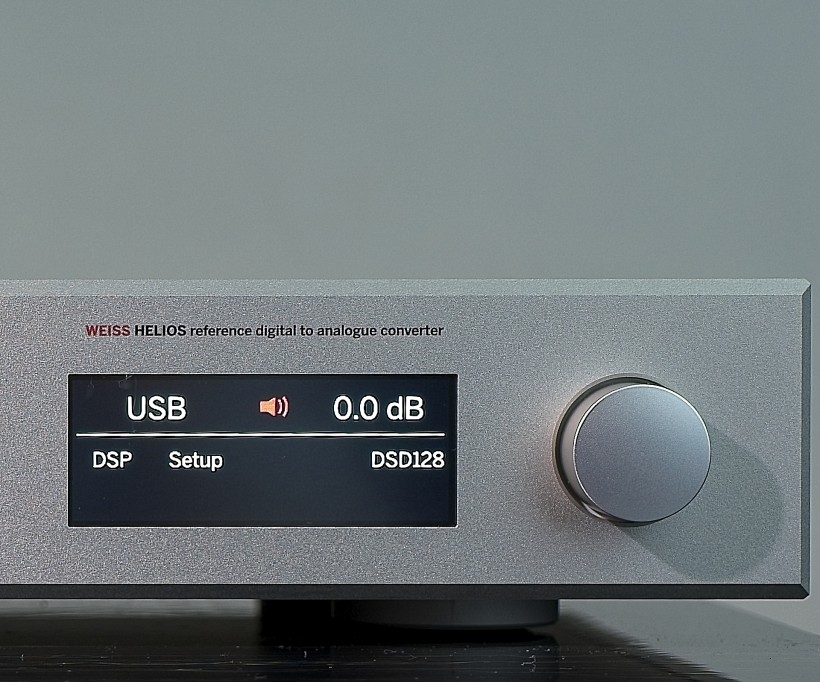
So what was it about Weiss Helios that caught my ears so easily and so convincingly? The simplest answer is an incredibly smooth, rich, and natural yet neutral sound. All these features came from the superb resolution Weiss provides. It resulted in the abundance of information, with the gazillion tiniest details and subtleties that were not thrown into my face but rather skilfully combined into a breathtakingly realistic, coherent whole. The smoothness of the sound was a natural feature, not a coloration, as it was supported with a rarely heard level of clarity and transparency that allowed me a great insight even into the deepest layers of music.
One of the albums that proved beyond any doubt that this smoothness is not an artificial feature was Kenichi Tsunoda Big Band’s „Mixer’s Lab Sound Series Vol. 1”. Yes, it is a recording of a big band, that plays in an elegant, even quiet way until, that is, brass or drums or both erupt with an energy of a small volcano and the whole band goes nuts. Helios delivered even those most heated, most „crowded”, fastest moments without as much as a sweat, in an orderly, highly energetic, incredibly pure, yet rich, and well-balanced way. And then it went quiet again perfectly delivering shimmering cymbals, gentle bowing of almost sweet-sounding string instruments, and deep, open sounds of saxophone and trombone.
The album was also a wonderful showcase of the dynamic range of tested DAC which, to fully enjoy the music, encouraged me to push the volume way beyond my regular listening level. It was simply impossible not to enjoy the vibrant, highly energetic, powerful, and natural sound of the big band. The fun part was that whenever I wanted, which I rarely do, I could benefit from Helios’ analytical abilities and delve into intricate details, but also whenever, which was most of the time, I chose to enjoy the performance as an incredibly coherent, harmonic whole, it delivered it with panache and scale while keeping the presentation pure, transparent, and orderly. I can’t say that I am a huge fan of big bands, and I don’t even have many good recordings of this type, but this particular album and performance caught in it, thanks to the exciting and realistic way Helios delivered it, became one of my favorites!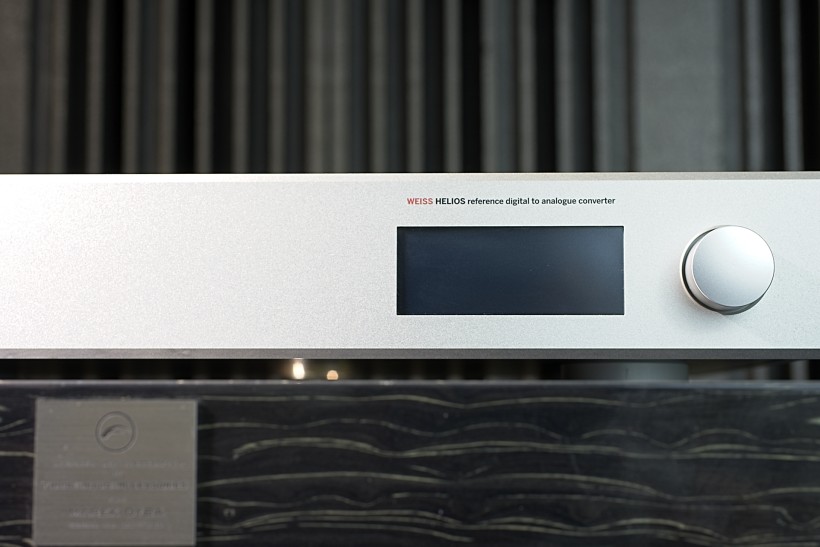
Changing the pace I switched to the latest album by Bobo Stenson Trio and I did it on purpose. I wanted to compare the sound provided by Helios to what I’d heard just a few days earlier live in the beautiful concert hall of the Chopin University of Music in Warsaw. The set the three gentlemen played with tracks mostly from their last album „Sphere” was one the best performances I’d heard over the past few years. The University hall’s acoustics was a factor but it was these three outstanding musicians and their charisma that brought down the house. Every recording is very different from a live sound – that’s obvious. Yet, the way the album and a few others by the Trio were presented by Weiss DAC had more in common with what stuck in my mind after the concert than I expected.
One thing was the maestro’s mostly gentle, soulful playing that I got with Helios too. It was presented as a bit more forward than in the concert, where he kept a bit back letting the other two guys shine, but it still conveyed beautifully the way of playing. The piano sounded deep, and rich, it was vibrant, yet gentle. Jon Falt playing drums often took the lead on the stage or at least grabbed the audience’s attention with his creative way of playing using not just his drums and cymbals but also dozens of tiny elements to produce sounds, including parts of the hall’s decor. While on the album he surely wasn’t so improve-prone as when performing live, he still delivered an exciting performance with all those various tiny sounds that Helios allowed me to follow in great detail. Having the picture or sound of the concert in my mind and the sounds so well rendered and differentiated with the Swiss DAC I could easily guess which of those small elements he played at any moment, and I believe I was right most of the time. Importantly, the energy of this performance delivered by Helios was not that far off from that of a concert, which was quite an achievement.
The third member of the band, Anders Jormin, playing his double bass often competed with Jon for the audience’s attention which created a lot of heated conversations between the two, so to speak. Again, the studio recording was not quite as exciting, but the sound of one of my favorite instruments was reproduced in a beautifully natural, full, and open manner. There was enough wood in it, and yet his pizzicato was rendered in the most convincing, pure, fast, ear-catching way that made me follow him more often than other musicians. Still, what I was most impressed by was how all three of the gentlemen, while showcasing their immense talents and individual techniques, came together to deliver mesmerizing, immersive performances that kept me adding more of their albums to the playlist.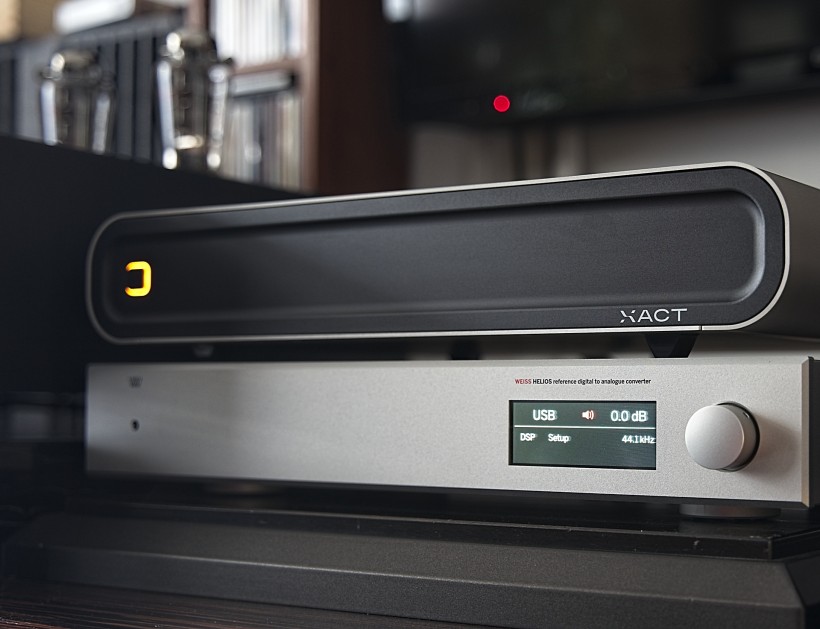
Listening to Midnight Blue’s „Inner City Blues” I was captured again by the incredibly pure, powerful, almost (!) piercing sound of a trumpet. It seemed to play just a few meters away from me in such a convincingly natural way that I couldn’t help but check every now and then whether it was there (I like to listen with my eyes closed). The soundstage in this recording was particularly convincing and the tested DAC rendered large, three-dimensional instruments spread across the stage, each with a precise position on it. Each of them had proper size and weight, the separation was nice and yet, they all, together with enchanting vocals, came beautifully together.
The realistic way Helios rendered the stage was not only about its width but also depth hence the positioning of each phantom image was so convincing with some of them in the foreground, others way deeper behind. The high resolution of the tested DAC allowed it to present tonnes of information on every sound source, even those placed further away from me. In that, it reminded me of numerous concerts I attended, where following a particular instrument was a matter of choice, though it required a bit more effort than with Helios. That’s the difference between live performance and well-planned studio recording, I guess.
Summary
The truth is, that no matter the music genre, the audio file’s format and resolution (even content streamed from Qobuz sounded really good) Weiss Helios delivered and amazed me. Whether acoustic or electric or electronic, whether small ensemble or large orchestra, the Swiss DAC rendered seemingly effortlessly a highly resolving, open, transparent, yet rich, saturated, natural-sounding performance. It was precise in its rendering, it took care of all, even the tiniest details, and it offered a very deep insight into every recording and yet it was not overly analytical, and not clinical.
Even for me, a fan of warm, rich, palpable tube sound, a neutral but also sounding natural Weiss Helios was a perfect, top-quality source. What did matter more than the type of music or files was the quality of the played content. Those well-prepared sounded incredibly good, with all the intricate details, with good insight into deepest the layers of the recording, and yet the „main theme” from my perspective was always the coherence of the presentation, and how natural it sounded while remaining neutral as well. Remember, that the algorithms, unique to Weiss D/A Converters, may help you with the lesser quality recordings and make them even more enjoyable.
Yes, my LampizatOr Pacific 2 and Playback Design MPD-6 are a touch warmer, allowing for a bit smoother flow of music, which I personally love, while Helios seems to focus on keeping it neutral, orderly, and incredibly insightful, and yet natural. Yet, even despite my personal (vinyl-related) taste I perceived Weiss Helios as offering a slightly different, yet at least as good, and no doubts about it, top (!) sound quality I could easily live with. Weiss Helios is one of just a few best D/A Converters I’ve ever listened to hence it fully deserves our Award. 
Price (when reviewed):
- Weiss Helios: 20.000 EUR + local VAT
- Weiss Helios (Poland): 103.650,00 PLN (incl. VAT)
Manufacturer: WEISS ENGINEERING
Distributor (France & Monaco): PRESTIGE AUDIO DIFFUSION
Distributor (in Poland): AUDIOFAST
Technical specifications (according to the manufacturer):
- Digital inputs: AES/EBU or S/PDIF via XLR, Toslink, and RCA sockets; UPnP/DLNA via Ethernet; USB; Roon Ready.
- Accepted formats: PCM 44.1kHz up to 384 kHz, DSD 64x / 128x; Future formats can be accommodated via software updates.
- Maximum input word length: 24 Bits
- Analog outputs: Line / Headphone-out unbalanced on RCA connector; Line / Headphone-out balanced on XLR connector
- Dimensions (DxWxH): 30 cm x 45 cm x 6.6 cm (with feet 7.4 cm)
Associated equipment:
- Digital source: a custom passive server with WIN10, Roon, Fidelizer Pro 7.10, JCAT NET XE, and JCAT USB XE cards with FERRUM HYPSOS Signature power supply, KECES P8 (mono) linear power supply for the server, JCAT USB Isolator
- D/A Converter: LampizatOr Pacific 2 +Ideon Audio 3R Master Time (USB signal regenerator)
- Analog front end: J.Sikora Standard MAX turntable, J.Sikora KV12 tonearm, J.Sikora KV12 MAX tonearm, AirTight PC-3, phono stages: Grandinote Celio MK IV, ESE Lab Nibiru V 5.
- Power amplifiers: GrandiNote Shinai, Circle Labs M200, Art Audio Symphony II (modified)
- Preamplifier: Circle Labs P300
- Loudspeakers: GrandiNote MACH4, Ubiq Audio Model ONE Duelund Edition.
- Interconnects: Bastanis Imperial x2, Soyaton Benchmark, Hijiri Million, Hijiri HCI-20, TelluriumQ Ultra Black, KBL Sound Himalaya 2 XLR, David Laboga Expression Emerald USB, David Laboga Digital Sound Wave Sapphire Ethernet
- Speaker cables: Soyaton Benchmark
- Power cables: LessLoss DFPC Signature, Gigawatt LC-3
- Power: Gigawatt PF-2 MK2 and Gigawatt PC-3 SE Evo+; a custom power line with Gigawatt LC-Y in-wall cable; Gigawatt G-044 Schuko and Furutech FT-SWS-D (R)
- Network: Silent Angel Bonn N8 + Silent Angel Forester F1 + optical LAN isolator
- Racks: Base VI, Rogoz Audio 3RP3/BBS
- Anti-vibration accessories: ROGOZ-AUDIO SMO40 and CPPB16 platforms and ROGOZ AUDIO BW40MKII feet, Franc Accessories Ceramic Disc Slim Feet and Wood Block Platform, Graphite Audio CIS-35 and IC-35





